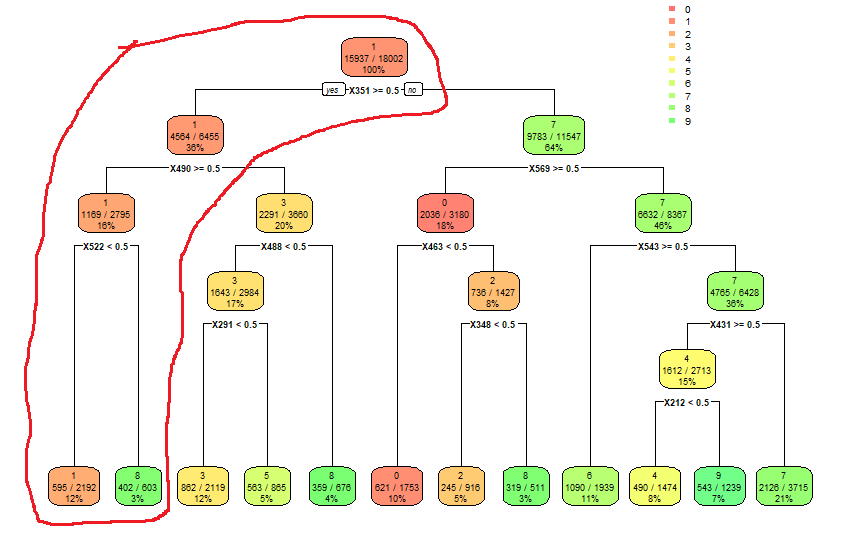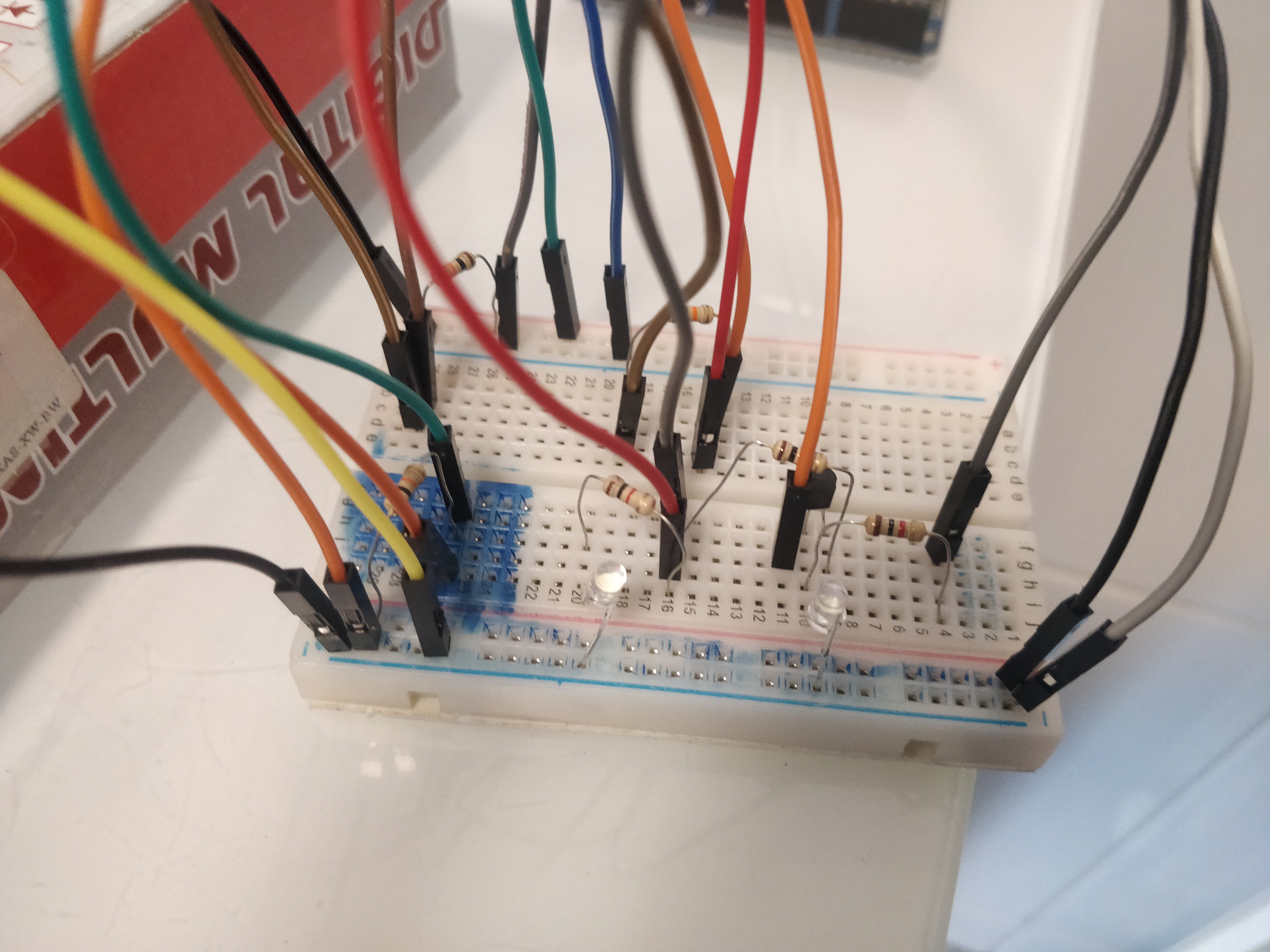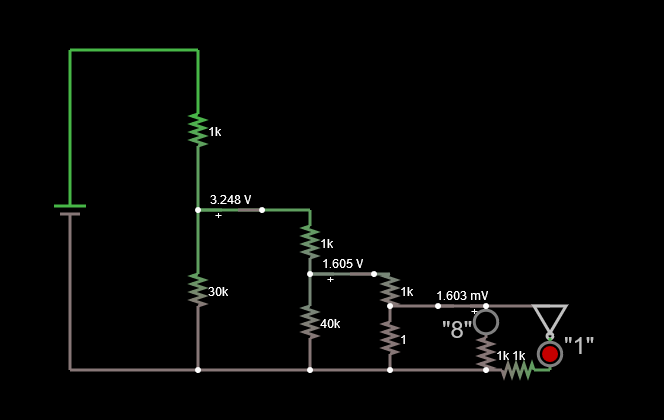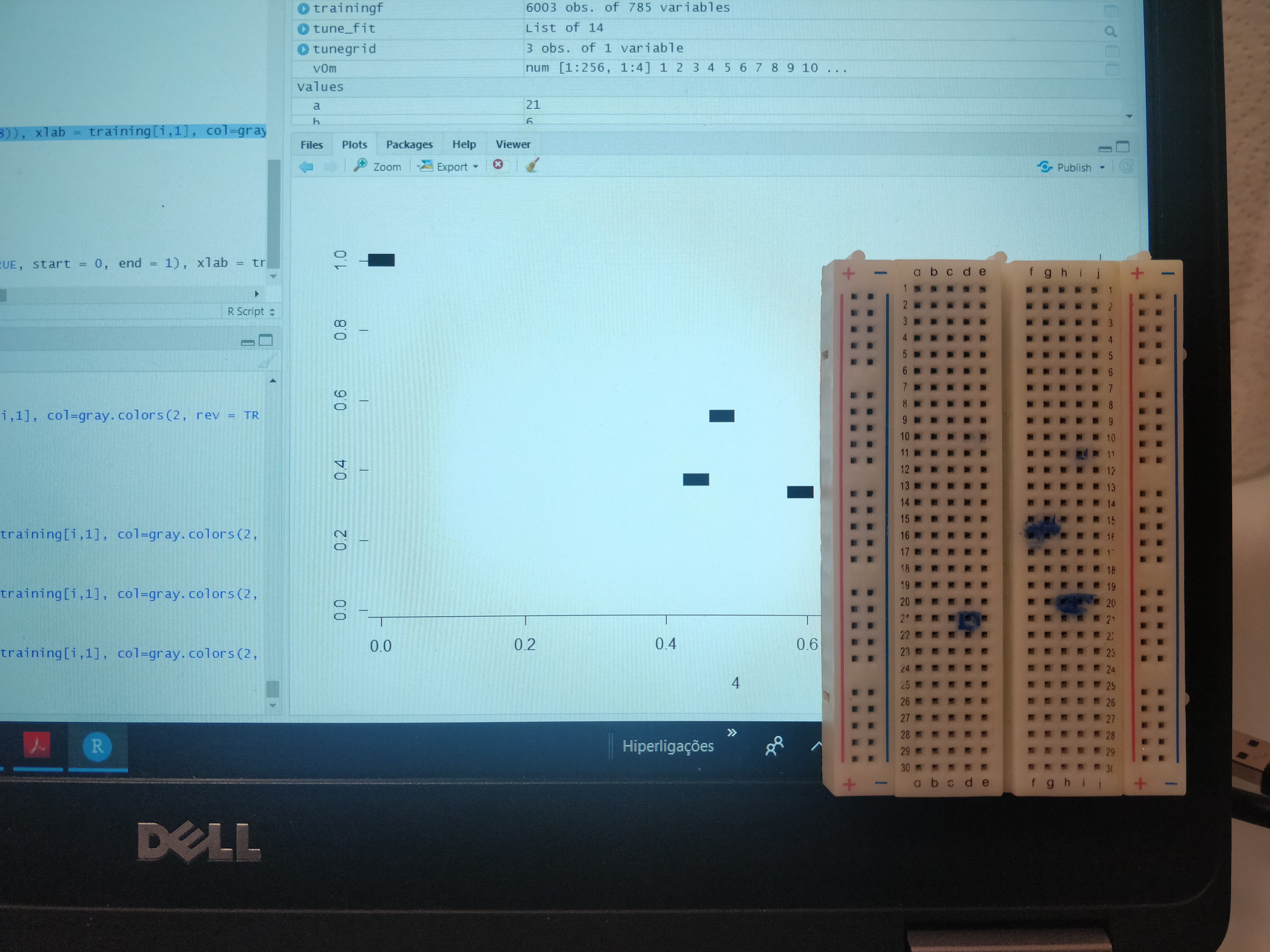The goal of this task is to make a prototype of the digital version of the discrete component object recognition system.
Digital implementation
Once it was clear that there was a digital pathway, I set forth to building a prototype.
The first prototype was based on the leftmost pathway of the decision tree below.

This would allow us to identify 100% of the "1" with an accuracy of 53% and about 30% of the "8" with an accuracy of 20%. This accuracy of 20% doesn't sound like much but let's not forget that a monkey pulling bananas hanging on strings would get 10% and this is a proof of concept. We can increase the accuracy, but I'd need a lot more sensors, and probably a more robust setup than dangly Aliexpress breadboards.
By the way, does anyone know of a trick to secure resistors in place on a breadboard? The connection is sketchy and drives me mad.
So, I sketched the circuit on kicad on the kitchen tiles and got to build onto a breadboard.

Later on I realized that there was a small mistake on my drawing but this got quickly corrected on the breadboard.
Below is a picture of half the setup, not including the sensors. This is probably not what comes to your mind when someone asks you to picture Artificial Intelligence.

In the end, as usual, the circuit didn't work. I used the Falstad circuit simulation tool to see what was going on and found out that the voltage I was using was too low to drive the LEDs at the other end if the circuit.

There was not enough voltage to even get a signal and read from the Arduino so it was easier to play with the values on the DC source until a reasonable signal would come out of the other end. In the end, it was a 12V DC source that did it.
Even spending a few hours changing resistor values and rerouting signals did not get me any closer to using both LEDs successfully, After a bit of thinking about the circuit, I realized that once one resistor upstream changed so did the other voltages downstream, so nothing was completely black and white after all. I really need some help to figure out how to implement the circuit for this system.
In the end, I couldn't let my lack of know-how on testing the feasibility of the concept, so I resorted to my good old trusty Arduino to do the ADC for me and let me know whether a 1 or an 8 was being identified.
For the sensing side, The relevant pixels were drawn on the screen in order to setup the alignment on the breadboard and mount the sensors.

Once the sensors were mounted, the alignment was verified and the setup was ready for testing.

Test drive
For the tests, the same MO was used as in the previous tasks, i.e. cycling digits on the screen, reading the voltage via the ADC on the Arduino UNO, print()ing the values to serial and reading the serial from Rstudio where it would get compared to the number displayed. The information would then be recorded on a confusion matrix.
All went well with the Arduino, the ADC behaved beautifully and the signals for the binary 0 and 1 were clearly distinguishable from the voltage readings. Nevertheless, once I started testing, I realized that my sensors were too big for the pixels.
Too big sensors? No problem I thought, we just increase the pixel size. The matrix was averaged to reduce the pixel size by half but since numbers tend to be thin by nature, then a lot of traces got erased during the translation from gray scale to black and white. This meant that even I could not tell the numbers apart.
As W.C. Fields said:
If at first you don't succeed, try, try again. Then quit. No use being a damn fool about it.
Conclusion
It's probably possible to make a binary system work, but with my current limitations I could only continue with some help on getting the circuit to do my bidding, and smaller sensors to measure said pixels.
I'll try to find a way to make the sensors smaller, or get smaller sensors. To be continued.
Discussions
Become a Hackaday.io Member
Create an account to leave a comment. Already have an account? Log In.